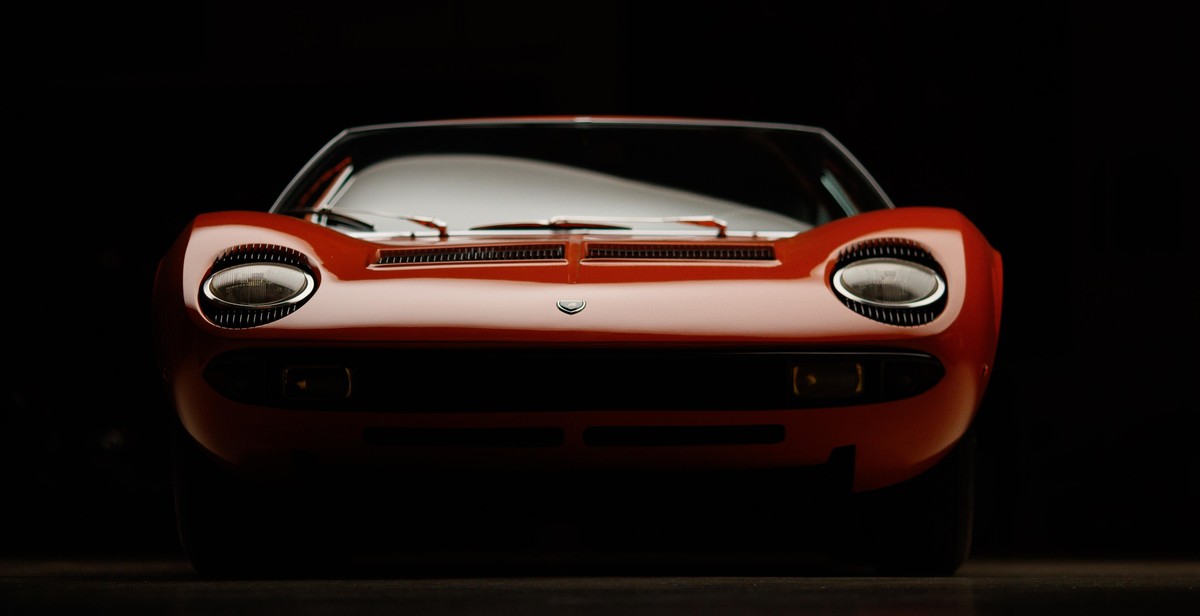How to Optimize Your Car’s Aerodynamics for Better Efficiency
One of the biggest factors affecting a car’s fuel efficiency is its aerodynamics. The way a car moves through the air can greatly impact its fuel consumption and overall performance. Fortunately, there are several ways to optimize a car’s aerodynamics, which can result in better fuel efficiency, improved handling, and a smoother ride.
What is Aerodynamics?
Aerodynamics is the study of how objects move through the air. In the case of a car, aerodynamics refers to how air moves around and through the car’s body while it is in motion. The goal of aerodynamic optimization is to reduce drag, which is the force that opposes motion as a car moves through the air. By reducing drag, a car can move more easily through the air, which can result in improved fuel efficiency.
How to Optimize Your Car’s Aerodynamics
There are several ways to optimize your car’s aerodynamics, including:
- Reducing weight
- Streamlining the body
- Adding spoilers and diffusers
- Improving wheel design
- Adjusting the suspension
Each of these methods can help to reduce drag and improve fuel efficiency. By implementing these changes, you can get more out of your car while using less fuel, saving you money in the long run.

Understanding Aerodynamics
Aerodynamics is the study of how air flows around objects, such as cars, planes, and buildings. It involves the analysis of the forces of air on these objects and how they affect their movement and performance. In the context of cars, aerodynamics refers to how air interacts with the car’s body, including its shape, size, and features, and how this affects its efficiency and performance.
How Do Aerodynamics Affect Your Car’s Efficiency?
The aerodynamics of your car play a crucial role in determining its efficiency. The way air flows around your car affects its drag, which is the force that resists its movement. The more drag your car experiences, the more energy it needs to move forward, which translates to more fuel consumption and lower efficiency.
One of the most significant factors that affect your car’s aerodynamics is its shape. The ideal car shape for aerodynamics is one that is streamlined and has minimal protrusions or sharp angles. A streamlined shape allows air to flow smoothly over the car’s body, reducing drag and improving efficiency. On the other hand, a car with a boxy or bulky shape will experience more drag, resulting in higher fuel consumption and lower efficiency.
Other factors that affect your car’s aerodynamics include its size, weight, and features such as spoilers, air dams, and side skirts. These features are designed to manipulate the airflow around the car, reducing drag and improving efficiency. For instance, a spoiler at the rear of your car can help to reduce drag by creating a downward force that pushes the car onto the road, reducing air resistance. Similarly, air dams and side skirts can help to channel air around the car’s body, reducing turbulence and improving efficiency.
| Factors that Affect Aerodynamics | Effect on Efficiency |
|---|---|
| Shape | Significant |
| Size | Significant |
| Weight | Minor |
| Spoilers, air dams, and side skirts | Significant |
Overall, understanding the aerodynamics of your car is essential if you want to optimize its efficiency. By ensuring that your car has a streamlined shape and features that reduce drag, you can significantly improve its fuel economy and save money on gas.

Factors Affecting Aerodynamics
Aerodynamics plays a significant role in determining the efficiency and performance of a vehicle. The following factors affect the aerodynamics of a car:
Vehicle Shape
The shape of a vehicle is one of the most critical factors that affect its aerodynamics. A streamlined and aerodynamic car design can significantly reduce drag and air resistance, resulting in better fuel efficiency and performance. Modern car designs often feature smooth, rounded edges, and a sleek body to minimize air resistance. Additionally, the use of spoilers, air dams, and other aerodynamic components can further enhance the vehicle’s aerodynamics.
Airflow Obstructions and Turbulence
Airflow obstructions and turbulence can significantly reduce a vehicle’s aerodynamics. These can be caused by the car’s external components, such as side mirrors, roof racks, and antennas. Such components disrupt the smooth flow of air around the vehicle and create turbulence, which increases drag and air resistance. To optimize a car’s aerodynamics, it is recommended to remove any unnecessary components that may obstruct the airflow and create turbulence.
Undercarriage Design
The design of a car’s undercarriage plays a crucial role in its aerodynamics. A smooth undercarriage design can significantly reduce the amount of air resistance and drag created by the vehicle’s movement. Additionally, the use of underbody panels and diffusers can further enhance the vehicle’s aerodynamics by directing the airflow and reducing turbulence.
Vehicle Weight
The weight of a vehicle affects its aerodynamics as well. The heavier a car is, the more air resistance it creates, which results in reduced fuel efficiency and performance. To optimize a car’s aerodynamics, it is recommended to reduce the vehicle’s weight by removing any unnecessary items, such as heavy sound systems or extra seats. Additionally, the use of lightweight materials in the car’s construction, such as aluminum or carbon fiber, can further enhance its aerodynamics.
| Factor | Effect on Aerodynamics |
|---|---|
| Vehicle Shape | Significant impact on reducing drag and air resistance |
| Airflow Obstructions and Turbulence | Creates drag and air resistance, should be minimized |
| Undercarriage Design | Smooth design reduces air resistance and drag |
| Vehicle Weight | Heavier vehicles create more air resistance and drag |

Improving Your Car’s Aerodynamics
Improving your car’s aerodynamics is essential to achieving better efficiency and reducing fuel consumption. Here are some ways to optimize your car’s aerodynamics:
Body Modifications
Body modifications can significantly improve your car’s aerodynamics. Consider adding a front air dam, side skirts, and a rear spoiler to your car. These modifications help reduce drag, which in turn improves fuel efficiency. A front air dam is installed on the bottom of the front bumper to redirect airflow around the car, minimizing wind resistance. Side skirts are installed under the car’s doors to reduce turbulence and drag. A rear spoiler helps reduce drag by directing airflow over the car and reducing the amount of air hitting the rear of the vehicle.
Airflow Management
Airflow management is crucial in optimizing your car’s aerodynamics. Here are some tips:
- Ensure that your tires are properly inflated. Underinflated tires can increase drag and reduce fuel efficiency.
- Remove any roof racks or cargo carriers when not in use. These accessories increase drag and reduce aerodynamic efficiency.
- Keep your car clean. Dirt and debris on the car’s surface can create turbulence and increase drag.
- Avoid driving with windows down at high speeds. This can create turbulence and increase drag, reducing aerodynamic efficiency.
Vehicle Maintenance
Maintaining your vehicle is crucial in optimizing its aerodynamics. Here are some tips:
- Regularly replace air filters. A dirty air filter can reduce airflow to the engine, which can decrease fuel efficiency.
- Ensure that your suspension system is in good condition. A damaged suspension system can cause the car to sit lower, increasing drag and reducing aerodynamic efficiency.
- Check your wheel alignment regularly. Misaligned wheels can cause the car to drag and reduce fuel efficiency.
- Use lightweight oil. Heavy oil can increase drag and reduce fuel efficiency.
| Category | Tip |
|---|---|
| Body Modifications | Add front air dam, side skirts, and a rear spoiler to reduce drag |
| Airflow Management | Ensure proper tire inflation, remove roof racks and cargo carriers, keep car clean, avoid driving with windows down at high speeds |
| Vehicle Maintenance | Regularly replace air filters, ensure good suspension system, check wheel alignment regularly, use lightweight oil |

Conclusion
Optimizing your car’s aerodynamics is crucial to achieving better fuel efficiency and reducing emissions. By following the tips outlined in this article, you can improve your vehicle’s aerodynamics and save money on gas while reducing your carbon footprint.
Key Takeaways
- Reducing drag is key to improving your car’s aerodynamics
- Simple modifications like removing roof racks and lowering your car can have a big impact on aerodynamics
- Using aerodynamic add-ons like spoilers and diffusers can further improve your car’s efficiency
- Properly inflating your tires and regularly maintaining your car can also improve aerodynamics
Future of Aerodynamics
The automotive industry is constantly evolving and improving, and aerodynamics is no exception. As electric and hybrid cars become more prevalent, aerodynamics will play an even bigger role in improving their efficiency and range. Additionally, advances in materials and technology will allow for even more innovative and effective aerodynamic solutions.
Start Optimizing Your Car’s Aerodynamics Today!
Whether you’re looking to improve your car’s fuel efficiency or reduce your carbon footprint, optimizing your car’s aerodynamics is a simple and effective way to achieve your goals. By implementing the tips outlined in this article, you can start seeing results right away. Happy driving!
